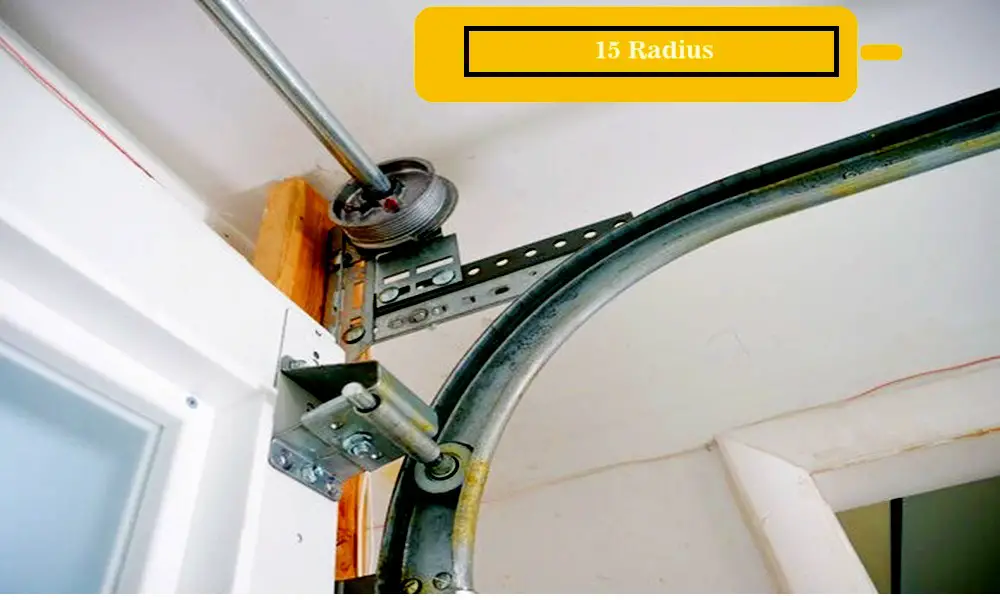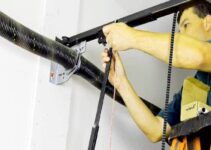Garage doors are an important part of every home, providing security and comfort. However, when selecting the right components for garage door, understanding the track radius is critical. In this article, I will provide the importance of garage door track radius and why it is important in your decision-making process.

Importance of Track Radius in Garage Doors
The track radius plays a pivotal role in how smoothly and efficiently your garage door operates. It determines the curvature of the track, affecting the door’s opening and closing mechanisms. By choosing the appropriate track radius, you ensure optimal performance and longevity of your garage door system.
Different Track Radius Options
12-inch Radius Track
A 12-inch radius track features a sharper curve, resulting in a door that opens lower. This option is suitable for garage doors with limited headroom or space constraints. Typically, doors with a height shorter than 91 inches correspond to a 12-inch track radius.
15-inch Radius Track
On the other hand, a 15-inch radius track offers a smoother curve, allowing for more headroom and clearance. Doors with heights ranging between 91 and 93 inches are compatible with a 15-inch track radius. It provides a balance between functionality and aesthetics, accommodating various garage door sizes and styles.
Headroom Requirements for 15-inch Radius Track
Opting for a 15-inch radius track necessitates adequate headroom within your garage. Approximately 14.25 inches of headroom is required to accommodate the track’s curve and other components effectively. It’s essential to consider this aspect, as insufficient headroom can hinder the door’s movement and lead to operational issues.
Quick Tips for Measuring Garage Door Track Radius
- Measure from inside the garage for accuracy.
- Exclude door jambs or obstructions from measurements.
- Ensure unobstructed space between the ceiling and door.
- Measure the depth from door opening to the back wall.
- Consider the impact of track radius on spring selection.
Impact of Track Radius on Spring Type
The track radius directly influences the type of springs needed for your garage door. Different radius options require specific spring configurations to maintain proper balance and tension. Therefore, understanding the track radius is essential for selecting the appropriate springs and ensuring smooth door operation.
Factors to Consider When Choosing Track Radius
When deciding on the track radius for your garage door, several factors come into play. These include the door’s height, available headroom, space constraints, and aesthetic preferences. By considering these factors, you can determine the most suitable track radius that meets your requirements.
Measuring Garage Door for Track Radius
Accurate measurement of your garage door is crucial for determining the appropriate track radius. Take precise measurements from inside the garage, excluding any obstructions or door jambs. Additionally, ensure sufficient headroom and clearance for the selected track radius to prevent operational issues.
Installation Considerations
Whether installing a new garage door or replacing existing components, proper installation is paramount. Follow manufacturer guidelines and recommendations for track radius selection and installation procedures. Attention to detail during installation ensures optimal performance and longevity of your garage door system.
Upgrading Existing Garage Doors
If upgrading your garage door, consider the current track radius and compatibility with new components. Consult with a professional installer to assess your options and determine the most suitable track radius for your upgraded door. Upgrading ensures improved functionality and enhances the overall aesthetics of your garage.
Common Mistakes to Avoid
Avoid common pitfalls such as incorrect measurements, inadequate headroom, and mismatched components. These mistakes can result in poor door performance, safety hazards, and costly repairs. By exercising diligence and attention to detail, you can prevent these issues and enjoy a seamless garage door operation.
Safety Considerations
Prioritize safety when installing or servicing your garage door system. Follow safety guidelines and precautions to prevent accidents and injuries. If unsure, seek professional assistance to ensure proper installation and maintenance practices.
Professional Assistance vs. DIY Approach
While some homeowners may opt for a DIY approach, seeking professional assistance is advisable for complex installations or repairs. Experienced technicians have the expertise and tools to handle garage door systems safely and efficiently. They can also provide valuable insights and recommendations based on your specific requirements.
Conclusion
The track radius is a critical factor in determining the performance and functionality of your garage door. By understanding the different options available and considering key factors such as headroom requirements and spring compatibility, you can make informed decisions when selecting the track radius for your garage door. Whether installing a new door or upgrading an existing one, prioritize accuracy and attention to detail to ensure optimal performance and longevity.


